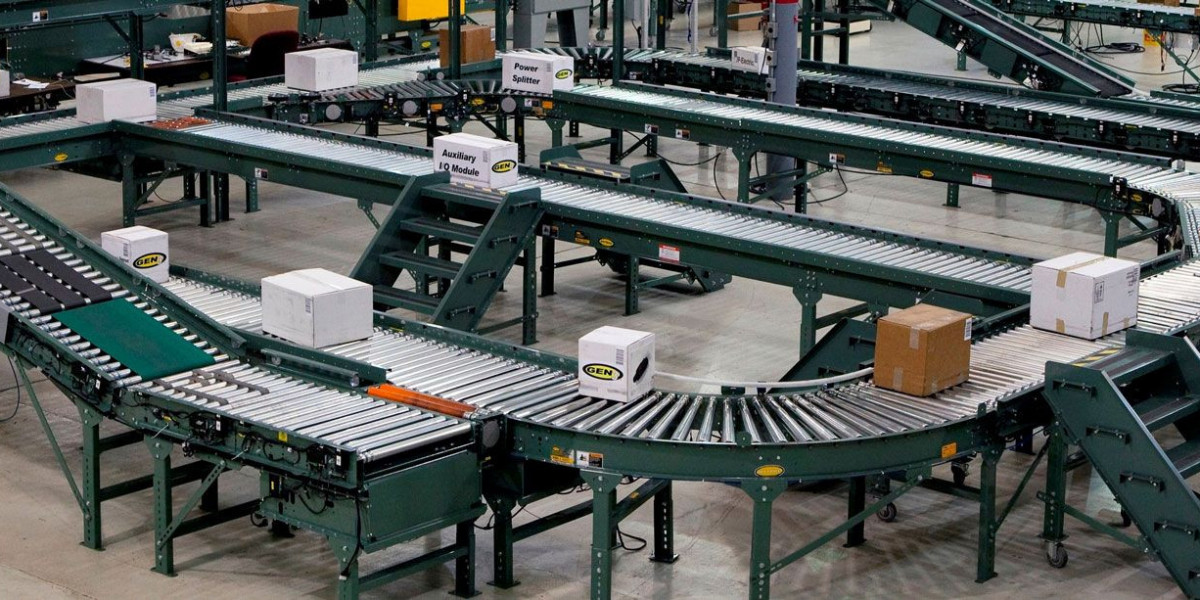History and Development of Conveyor Belt Technology
The earliest forms of conveyor belts date back to the late 19th century when they were used in mining and other industrial applications to efficiently transport heavy materials. One of the first documented uses was in coal mining where overhead belts helped transport loads of coal out of mines. Through the early 1900s, conveyor belt designs continued to evolve and spread to other industries like agriculture, manufacturing, and shipping. Advances in belt material sciences and drive systems helped increase load capacities and speeds. By the middle of the 20th century, conveyor belts had become a core component of production lines and material handling worldwide.
Belt Materials and Design Characteristics
A wide variety of materials are used in modern Conveyor Belts depending on the intended application and environment. Some common belt materials include rubber, plastic, metal, and fabric. Rubber and plastic belts offer strength and durability for general industrial use while being lightweight and flexible. Metal belts are heat and impact resistant making them suitable for high-temperature or hazardous environments. Fabric belts are lightweight and economical for low-load applications. Key design aspects include belt width, ply number and thickness, joiner style, cleat or cord configuration, and drive attachments. Higher ply belts support heavier loads, while thinner belting is used where weight is a constraint. Various joint designs ensure strength and smooth transitions around pulleys.
Belt-drive and belt-tracking Systems
Precise belt movement relies on effective drive and tracking components. Most conveyor belts are powered through pulley drives where an electric motor rotates one or more head pulleys that pull the belt around its path. Variations use chain or drum drives tailored for specific needs. Tracking rollers, idler pulleys, and take-ups help guide the belt edge and center. Tensioning mechanisms keep the belt under even pressure for consistent motion. Proper alignment and adjustment of these systems are critical to prevent slippage and premature belt wear.
Key Applications for Conveyor Belts
Material handling is one of the primary applications of conveyor belts in industries like manufacturing, warehousing, mining, and airports. Integrated conveyor networks transport raw materials, work-in-process loads, and finished goods between production stations and storage facilities with efficiency and precision. food processing relies extensively on conveyor belts in applications like sorting, packaging, and order fulfillment. Packers and shippers use belt conveyors to move cases and pallets. Airports utilize belts to transport baggage between terminals, transportation hubs, and aircraft. Packaging lines incorporate vertical and horizontal belts for assembly and high-speed line flows.
Belt Selection and Maintenance Considerations
Selecting the right belt type and design specifications requires evaluating factors like load weight and size, expected duty cycles, environmental conditions, wash-down requirements, speed needs, and space constraints. Periodic maintenance keeps belts and related components functioning optimally. Key tasks involve track checking, pulley alignment, belt joining repairs, cleaning buildup from rollers and undersides, and belt inspections for wear and tear. Proper ongoing care extends operational lifetime and helps avoid unexpected downtime from failures. Condition monitoring also enables predictive maintenance to plan repairs and replacements strategically.
Conveyor Safety Features
As materials transportation systems, conveyor belts require integrated safety features to protect workers. Standards-compliant designs incorporate machine guards, emergency stop buttons, two-hand operation enforcers, light curtains, and sensors to detect obstructions. Access points allow inspection and service while preventing contact with moving components. Belt covers, cage guards, and fall protection barriers further shield hazardous zones. System controls offer programmed start-up delays, speed controls, and zone isolation switches. Safety policies and regular employee training reinforce safe work procedures around conveyor equipment. Automated detection technologies like presence sensing safeguards also help prevent injuries.
Conveyor bBelts have become an indispensable part of modern industrial transportation infrastructure. Continuous technology development further expands application scope and optimizes performance. With proper selection, installation, operation and maintenance, conveyor belt systems reliably and efficiently facilitate the movement of materials worldwide.
Get More Insights on — Conveyor Belts
This report can also be read in - Japanese
About Author:
Alice Mutum is a seasoned senior content editor at Coherent Market Insights, leveraging extensive expertise gained from her previous role as a content writer. With seven years in content development, Alice masterfully employs SEO best practices and cutting-edge digital marketing strategies to craft high-ranking, impactful content. As an editor, she meticulously ensures flawless grammar and punctuation, precise data accuracy, and perfect alignment with audience needs in every research report. Alice's dedication to excellence and her strategic approach to content make her an invaluable asset in the world of market insights.
(LinkedIn: www.linkedin.com/in/alice-mutum-3b247b137 )









